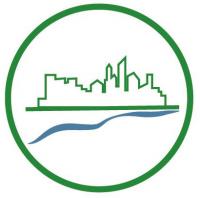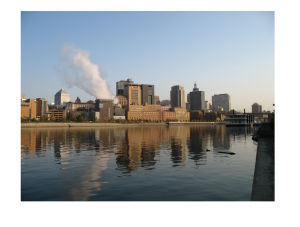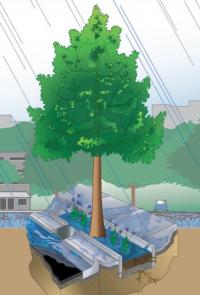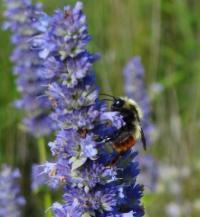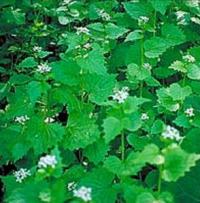Introduction
Due to high percentages of impervious surface, invasive species pressure, and fragmented natural areas, urban landscapes can be impacted by a wide range of landscape and climate stressors. This amplifies the need to find ways to increase resiliency. Incorporating green infrastructure while also protecting and restoring native plant communities can provide many environmental benefits and improve the quality of life for residents.
Planning Methods and Programs
Urban planning methods can vary depending on community needs, regional location, demographic makeup, local economy, and topics of interest. The following is a summary of some key planning methods:
GreenStep Cities Program: This program, sponsored by the Minnesota Pollution Control Agency, is a voluntary challenge, assistance and recognition program to help cities achieve their sustainability and quality-of-life goals. This free continuous improvement program, managed by a public-private partnership, is based upon 29 best practices. Each best practice can be implemented by completing one or more actions at a 1, 2 or 3-star level, from a list of four to eight actions. These actions are tailored to all Minnesota cities, focus on cost savings and energy use reduction, and encourage civic innovation. Examples of city actions and strategies are highlighted under Best Practice 6: Comprehensive, Climate and Energy Plans.
U.S. Climate Resilience Toolkit: This website offers multiple tools for identifying climate vulnerabilities and planning how to build resilience. The Steps to Resilience tool can get organizations started exploring threats, assessing risks, checking out options, prioritizing, and taking action. Additional tools and case studies are organized by topic and region.
Forest Adaption Resources: Climate Change Tools and Approaches for Land Managers: This guide provides a comprehensive set of materials and wide array of strategies that enables decision makers to consider climate change. Developed for forest areas, the Climate Change Field Guide for Northern Minnesota Forests and Adaptation Workbook (pdf) include five steps to incorporate climate change considerations into management plans whether working in forests or urban areas. The field guide lists major climate change impacts and provides individual tree species projection models.
The Trust for Public Land's Climate Smart CitiesTM program provides urban communities with tools and resources to raise funds, conduct research and planning, and attain, design, renovate, and protect urban landscapes. They present long-term visions in land stewardship and management that include climate adaption techniques to ensure green spaces are used and maintained.
Best Practice Actions from the Minnesota GreenStep Cities Program:
1) Prepare to maintain public health and safety during extreme weather and climate-change-related events, while also taking a preventive approach to reduce risk for community members.
2) Integrate climate resilience into city or tribal planning, policy, operations, and budgeting processes.
3) Increase social connectedness through engagement, capacity building, public investment, and opportunities for economically vulnerable residents to improve their economic prosperity.
4) Encourage private sector action and incentivize investment in preventive approaches that reduce risk and minimize impacts of extreme weather and the changing climate for human health and the built environment.
5) Protect public buildings and natural/constructed infrastructure to reduce physical damage and sustain their function during extreme weather events.
6) Reduce the urban heat impacts of public buildings, sites, and infrastructure and provide resiliency co-benefits.
7) Protect water supply and wastewater treatment facilities to reduce physical damage and sustain their function during extreme weather events.
8) Improve local energy resilience by minimizing fuel poverty, installing distributed renewable energy systems, and developing microgrids that can improve energy system resiliency.
-
Other Best Practice Actions
-
1) Planting Urban Forests. Urban forests support biodiversity and can improve soil conditions. Trees within the urban environment also add social and community benefits, and have proven value in reducing runoff and mitigating stormwater management. An individual deciduous tree has the ability to take up anywhere from 500 to 760 gallons per year, while a mature evergreen can take over 4000 gallons. Tools like i-Tree Hydro online can calculate the managed stormwater on a site, as well as conserved energy, air quality improvements, and sequestered carbon dioxide.
Tree trenches are a relatively new stormwater practice 2) Complete Streets Design that Incorporates Trees and Vegetation. The addition of trees and other types of vegetation as part of complete street design provides shade and cooling opportunities but also provides opportunity to sequestrate carbon emissions, increase property values, decrease rain run-off rates, and protect against floods.
3) Restoring and Maintaining Diversity. Plant diversity in urban areas supports wildlife species and increases resiliency by helping plant communities continue to function as intact systems. Diverse plantings in urban areas can include a wide range of project types including rain gardens, riparian buffers and pollinator lawns. Filling niches by planting native species also prevents the establishment of invasive species. Diverse state seed mixes are available for a variety of project types and the Minnesota Wetland Restoration Guide summarizes restoration strategies for uplands and wetlands. Information is also available about plants for stormwater projects that can handle environmental stressors such as water fluctuation, nutrients and pollutants.
4) Providing Habitat for Pollinators and Other Beneficial Organisms. Pollinators and other insects and organisms play an essential role in supporting ecosystems. Pollinators provide seeds and fruits that are relied on by a wide range of wildlife by pollinating around 70% of flowering plants. Pollinators and other beneficial insects can be protected by minimizing pesticide use, buffering natural areas and diverse plantings from pesticide exposure, restoring habitat complexes and wide natural corridors, increasing plant diversity, and restoring clean water sources. Planting bee lawns and incorporating pollinator species into rain gardens and perennial planting can help a wide range of native insects.
Bumblebee on Giant hyssop 5) Building Soil Health. Using perennial vegetation in degraded urban soils can promote good soil structure, organic content and microorganism populations that translate into healthy soils that promote productive ecological landscapes.
6) Using Multiple Layers of Water Treatment. Implement a variety of practices such as the restoration of uplands, infiltration basins, rain gardens and wetland restoration to manage water resources. Incorporating these practices in urban landscapes can reduce runoff, recharge groundwater, improve water quality, and reduce flooding. Wise use of water resources and the use of catchment systems to recycle water can help ensure adequate supplies into the future.
7) Managing Invasive Species across Boundaries. Invasive species are effective at dispersal, giving them an advantage in adapting to changes in climate. Plan to work in partnerships to prioritize species and manage invasive species across ownership boundaries to restore resilient landscapes.
Garlic mustard, an invasive species 8) Enhancing Residential Landscapes. There are many strategies that homeowners can implement to increase the resiliency of their home landscapes including the planting of native trees and shrubs, installing rain gardens, building soil health in gardens and other plantings, installing no-mow and pollinator lawns, adding milkweeds and other pollinator plants to gardens and controlling invasive species.
9) Practicing Adaptive Management. Adjust management practices based on monitoring efforts and experience with successes and failures to improve the long-term effectiveness of management practices and resiliency of plant communities. Practices such as prescribed burning and water level management may replicate natural disturbances and promote diversity and resiliency. BWSR’s What’s Working webpage summarizes strategies that have been successful for conservation professionals.
10) Adapting to Climate Change. A major climate trend in Minnesota has been an increase in intense rainfall events that stress aquatic systems and cause erosion. Partners that are working on water planning and conservation projects should consider the potential for more extreme weather events and the implication for water and land resources. BWSR’s Climate Change Trends and Action Plan (pdf) provides detail about climate change adaptation for conservation and protection of natural resources. All of the strategies summarized in this section of the Toolbox play a role in climate adaptation efforts. In addition to the strategies already summarized, it is also important that NOAA Atlas 14 rainfall frequency data and good BMP/landscape planning and design practices are used to address larger storm events. It is also important to identify landscape and populations at risk (pdf) from climate change trends.
11) Public Engagement. Finding ways to engage landowners in projects within urban or rural communities can be an important way to promote conservation efforts. This can be accomplished through volunteer events, tours or promoting community gatherings where projects are featured. Having landowners speak about the benefits of projects on their property can be an effective method of convincing other landowners to sponsor projects.

